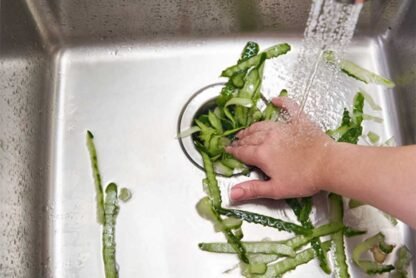In this informative guide, we will explore the fascinating world of rambutan fruit, which is commonly referred to as mamones chinos in Costa Rica. While the term mamones chinos will be used throughout the article, it is important to note that both names are commonly used to describe this delectable fruit.
Unveiling the Art of Eating Rambutan Fruit
To truly savor the rambutan fruit, it is essential to understand the proper technique for consumption. The following video demonstrates the ideal way to enjoy this tropical delicacy. In Costa Rica, locals often use the term mamones chinos when referring to rambutan fruit. Regardless of the name used, one thing is certain – indulging in this exotic fruit is an experience not to be missed.
Tip: Remember to keep a napkin handy while relishing this juicy treat!
A Global Perspective on Mamones Chinos
While conducting discussions with individuals from around the world, it became evident that the term “mamones chinos” is predominantly used in Costa Rica. However, rambutan fruit enjoys widespread popularity and is even consumed in the United States and Canada.
Whether you choose to call it mamones chinos or rambutan fruit, what truly matters is embracing the opportunity to try this extraordinary fruit during your next visit to Costa Rica. The peak season for rambutan fruit spans from July to September, with occasional availability in November. However, it is worth noting that the taste and quality may be compromised when the fruit is harvested later in the season.
A Bounty of Mamones Chinos in the Osa Region
Costa Rica’s Osa region is renowned for its vast mamones chinos farms and orchards. These thriving plantations are primarily owned by local farmers and families. Buyers from across Central America flock to this region, eager to acquire the bountiful harvest. For instance, in San Buenas, situated between Chontales and Tres Rios, a substantial quantity of rambutan fruit is purchased by a team from El Salvador. They transport over 50% of the town’s produce back to El Salvador for distribution.
Boasting an abundant variety of fruits, Costa Rica, particularly the Osa Peninsula, provides an ideal climate for cultivating mamones chinos. Personally, I relish mamones chinos just as much as guanabanas. However, one notable advantage of mamones chinos over guanabanas is the ease of consumption.
Unveiling the “Mamon Chino”
The “mamon chino” is a fruit that grows on trees, much like many other fruits. Its annual harvest entices fruit enthusiasts with its unique flavor profile. To enjoy this delightful treat, simply pluck a ripe fruit from the tree and use your teeth to peel away the skin, which typically separates into two or three large pieces. The sweet, white fruit awaits beneath the skin, surrounding a small almond-like seed. To fully relish the fruit, simply savor the flesh and remove it from the seed through gentle sucking. Once you have finished enjoying the fruit, discard the seed.
Eating mamones chinos can be a delightfully messy experience, leaving your hands sticky. Utensils may not be of much assistance, as the fruit is best savored by hand.
The name itself provides insight into the fruit’s nature. “Mamon” derives from the word “mamar,” which translates to “to suck” in English. “Chino” originates from the term “China.” Consequently, the term “mamon chino” refers to the Chinese sucking fruit.
We have planted numerous mamones chinos in Las Villas de San Buenas, and recently, one of our customers requested a few trees near his residence. It takes a couple of years for the trees to bear fruit after planting, but the wait is well worth it.









